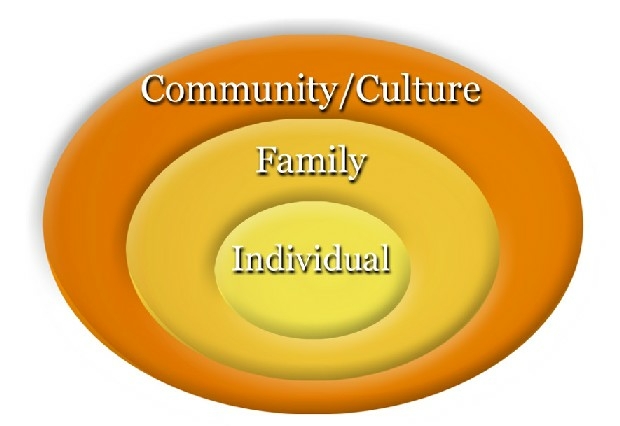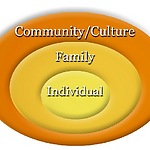How will culture, and differences in cultures, influence your project and results (List of 11)
- Power distance – egalitarianism
In the case of Mr. Mofokeng there is power distance. Mr. Mofokeng is not living at the farm, because his wife doesn’t like it. We have to respect the project owner and we are in a position to discuss the possibilities of biogas with him, but the arguments should be well constructed. Finally, the project owner is always right, so there is definitely power distance. In whole South-Africa since the Apartheid there is more egalitarianism in the society, but still in companies you can see a larger power distance between employer and employee. - Individualism – collectivism
At the farm of Mr. Mofokeng we can see signs of a collectivist culture. The people on the farm are working together on one big project as a team. The priority of the group serves a higher goal than of an individual. Mr. Mofokeng’s mentorship of black farmers is a sign of collectivism, because his interest of the group is bigger than that of him as an individual. - Masculine – feminine
The culture on the farm is feminine. Mr. Mofokeng’s daughter in law plays an important role as a financial advisor processes to his firm. This can be seen as a sign of equal gender roles. Mr. Mofokeng himself wants to help other farmers. This can bee seen as the nurturing. A man taking a nurturing role is another aspect of a feminine culture. - Uncertainty avoidance – traditionalism
In our case it is difficult to say if there is uncertainty avoidance. We think that there is a non-uncertainty avoidance situation, because Mr. Mofokeng is introducing something new on the farm and is definitely taking risks. On the other side we can also describe this situation as uncertainty avoidance, because of producing electricity. There are a few other farmers in the neighbourhood who also produce electricity with a biogas plant. So uncertainty avoidance or not, it depends on the way you look at it. - Universalism – particularism
In our situation you can see the particularism, because relations have more importance than rules. Knowing people, especially people with power, is important to get things done. - Specific – diffuse
In our case there is a diffuse culture. In the culture work relationships are closely connected to social relationships. If the social relationship is bad on the farm, the work relationship will go bad as a result. - Neutral – affective.
We think that in this situation there is a neutral way of connecting with each other. South Africa is different from other countries in Africa. The society is very tough compared with other African nations. For example, in Malawi the people refer to South Africa as ‘the Europe of Africa’, because of the corporate atmosphere and of the prosperity. It’s not easy to see on their faces if they really have affections, it’s more focused on avoiding tension. This analysis is based on what we have and heard experienced from people. - Status by achievement and labor or position.
Mr. Mofokeng himself is an example of status by achievement. All the people in the neighbourhood call him by his title, Professor Mofokeng. He was promoted to professor in the Netherlands. Generally in South Africa people obtain their status by position. There are several government officials who either have not completed formal education or are friends of old ministers. This is an example of status by position. - Sequential – synchronous
On the farm of Mr. Mofokeng the work is done in a sequential way. Mr. Mofokeng and the current group are working on one thing at the a time. They made a schedule at the beginning and have tried to reach those milestones. The plans, that have been made in the first stadium of the project, are still the same. - Internalism – externalism
In this business case there is a shortage of electricity. There are signs of internalism in this situation. .Mr. Mofokeng will produce electricity while is not fully dependent on the market. He can affect the market more than it can affect him, because of the electricity shortage and his own electricity production. Beside this fact, this case is driven by technology push and not by market pull. One of the only externalist processes is the funding by the government. Mr. Mofokeng can turn this external into an internal factor by the delivery of a realistic and fully described proposal.
11. Civil Society
In South Africa everyone has the possibilities to develop themselves, for example at the universities.
It is easy to start your own company. The society is not a strong one, because of all the corruption in the government. South Africa is a universalistic state, while there is an good functioning law, equality and financially they are in good conditions. Finally there is a responsible state, because every inhabitant has the rights to give their own opinions. Also in the media people are allowed to say what they want, but there is an boundary, like it is the Netherlands too.
Function of Innovation Systems
How can this project become successful? Which actors and factors are crucial for the successful entrepreneurship and innovation? This questions are answered with the functions of Innovation Systems.
There are two sets of functions of innovation systems. Van Alphen describes the functions that are more suitable for underdeveloped countries, while Hekkert describes the functions of innovation systems of developed countries. A choice has to be made for which functions to use. For our project we took the system of van Alphen, because South Africa is still an underdeveloped country
1. Entrepreneurial activities
Mr. Mofokeng is trying use the opportunities of biogas technology at the moment. At the farm of Mr. Mofokeng there is an spirit of culture of enterprise. Two years ago a group of two students went to the farm and built a small biogas plant. Nowadays, Mr. Mofokeng wants to expand the small installation into an installation for at least 150 cows
2. Creation of adaptive capacity
We think that the people are definitely ready for the innovations of Mr. Mofokeng. In the neighbourhood there are already a few farmers with a biogas installation and nearby a biogas power plant. The people are ready and by the given tours Mr. Mofokeng will show all the possibilities of biogas to make them ready for innovations. We assume that the universities need to teach about green energy in the future. So we can collaborate on a designing new course with them as means of innovation. Conditions that should be made are by example a collaboration with teachers from the TU Delft for professional expertise.
3. Knowledge diffusion through networks
The word will be spread by us. In collaboration with Mr. and Mrs. Mofokeng we will make a promotion campaign. This is already explained in the section ‘Project Structure’. We will promote using the internet (news websites, community websites, social media), advertisements (in newspapers, magazines), flyers/posters/signs, collaborate with churches. The sources of information are given by Mr. Spanjers, a professor from Holland, the current project team and from Mr. Mofokeng himself.
4. Demand Articulation.
Consumers are not aware of this need at the moment. We will spread knowledge about biogas in collaboration with the government, local biogas companies and Mr. Mofokeng. A few local farmers are aware of the advantages from making gas from your own waste. This project is not fully focused on the consumer society, but the consumers are in big need of electricity. This is a win-win situation, even though Mr. Mofokeng is not focused on consumer society. The consumers will still be pleased by the production of electricity and a hopeful price drop in the long term.
5. Market formation
In this business case electricity will be produced. In Devon, and in South Africa in general, there is an electricity shortage. This means that there is not enough electricity to use every electronic device in the house and at certain hours there is no electricity at al. Therefore, there is a market to sell this new produced electricity from the manure of cows. The only electricity supplier in South Africa, and Devon, is ESKOM. This is the reason why the electricity produced at the Chicken Chain Farm will be sold to ESKOM. The extra electricity makes that there will be less power cuts.
6. Resources mobilization
The most important resource will be the biogas digester. This digester has to be designed, constructed and maintained. The design will be an adapted proven already existing design and made by us. The construction and maintenance will be done by a local constructor. The already existing proven design is not that easy to get. We will need to visit some farms where there is already a processing biogas plant, so this can be our example. The next phase will be the application for permits.
Then the manure will be needed to make biogas and electricity out of it. The manure of the cows of Mr. Mofokeng is already on the farm. The manure of the animals which are from the biomass suppliers has to be picked up at the other local farms.
7. Creation of legitimacy / counteract resistance to change
The people in Devon have a need for electricity so the extra production of this product is very welcome. Where or how the electricity is produced is probably not that important to the consumers as long as it will be there.
8. Infrastructure networks
The necessary infrastructure is not yet fully available. First of all the manure of cattle from other farms need to be picked up. Therefore Mr. Mofokeng needs to have a pick-up to get the manure. This pick-up is already available. Next there need to be some electric cables to transport the electricity from the Chicken Chain Farm to ESKOM. These cables are not yet available but will be when the contract with ESKOM is signed.
Cultural analysis
The scheme of the national innovation system regarding the project is given in the figure above. The situation of the influence of the project is explained. The components that need further explanation are Intermediate organizations and Infrastructure.
In the intermediate systems the organizations are put which form a link between business systems and education and research systems. The most important intermediate system is SABIA, South African Biogas Industry Association. This is a network that represents the interest of the members of the biogas industry in South Africa. Over thirty parties from the biogas industry are member of SABIA.
In the infrastructure component the financing of the project plays a big role. NERSA is a regulatory authority whose mandate is to regulate the electricity, piped-gas and petroleum pipelines industries. And financial institutions and the government play a big role in funding the project.
The important potential barriers and/or enablers are NERSA, financial institutions, the government and local contractors.
NERSA can be a barrier. NERSA plays a role in issuing the licenses and setting pertinent conditions with regard to the generation and trading of energy products, including electricity and biogas.
The financial institutions and government are be enablers, because the project will be funded by financial institutions and the government.

